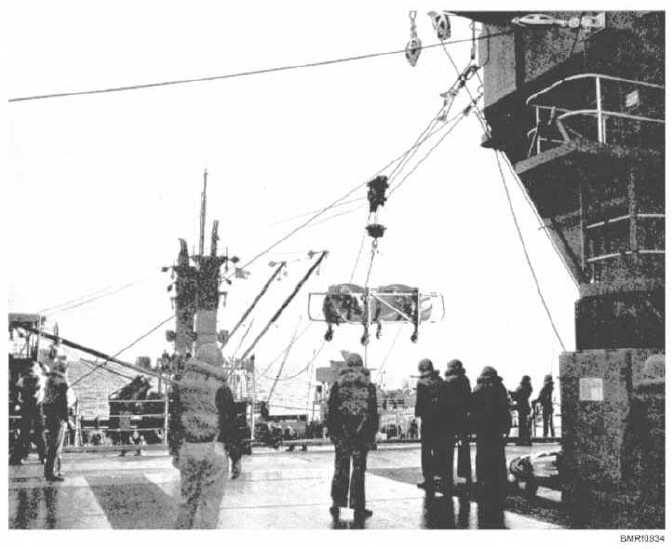mechanized through the use of pallet transporters and
forklift trucks. Cargo helicopters are available to
replenish outlying units of the force with dry cargo and
ammunition.
The missile and special weapons-handling system
is separate from the cargo-handling system. This
arrangement permits a continuous flow of missiles from
the cargo holds to the missile-transfer system, port or
starboard.
The fuel hoses on the AOE are designed to permit an
av e r a g e s h i p s e p a r a t i o n o f 2 0 0 f e e t d u r i n g
replenishment instead of the normal 100 feet. The
greater distance reduces the possibility of collision and
makes increased replenishment speeds feasible. There
are nine replenishment stations to port and six to
starboard.
FLEET SUPPORT SHIPS.—While certain types
of naval auxiliary ships are designed and equipped
specifically for towing, for salvage, or for rescue
operations, most of these types may, in an emergency
and to a limited extent, perform all these operations.
Among ships as versatile and as adaptable as the
8-29
Figure 8-34.—An AE highlines a missile to a guided-missile ship during replenishment at sea.
Student Notes:


